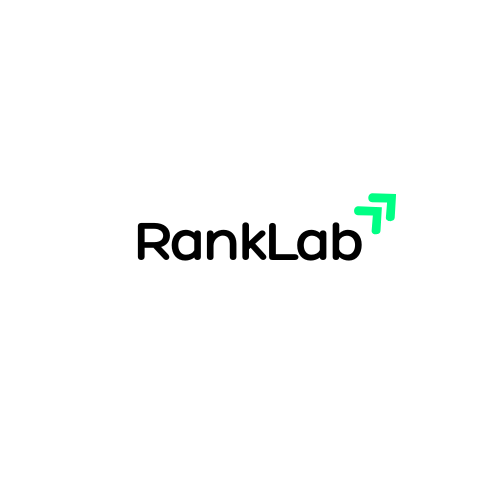The rise of AI writing tools has content marketers and small business owners asking an important question: Does AI content rank in Google search results, or will it be penalized? With Google’s algorithms constantly evolving, it’s important to understand their stance and how to ensure your content meets its quality standards.
In this article, we’ll explore their public position on the matter and how Google evaluates content quality and relevance, and practical tips to make sure your content can perform well in search.
Google’s stance on AI-generated content
This official guidance makes it clear that content isn’t judged negatively just for being AI-generated. In fact, Google has stated that “appropriate use of AI or automation is not against our guidelines” as long as it isn’t used to manipulate search rankings. In other words, Google does not automatically penalize content simply because a machine wrote it. What matters is the purpose and quality of that content.
Importantly, Google’s Search Central blog emphasizes that using AI gives you no inherent SEO advantage or disadvantage. Using AI doesn’t give content any special gains. It’s just content. It should be treated like any other content: if it’s helpful, original, and satisfies user intent (and Google’s E-E-A-T criteria), it can rank well. If it’s low-quality or made solely to game the rankings, it won’t perform well.
Google’s own algorithms and policies backup this stance. The Helpful Content System (introduced in 2022) targets content written primarily for search engines, not people. This includes mass-produced AI content that adds no value.

How Google measures content quality (E-E-A-T and relevance)
The ranking algorithms primarily look at content quality, relevance, and authority, not at who (or what) wrote it. These are factors to consider when determining if content is reliable and useful.
For example, Google’s quality guidelines ask: “Does the content present information in a way that makes you want to trust it, such as clear sourcing, evidence of expertise, [and] background about the author…?”
Whether the content is AI-generated or human-written, it should demonstrate accuracy and expertise. This can be done by citing credible sources, including author bylines or credentials, and ensuring the information is factual and up-to-date.
Another aspect is originality and depth. Google favors content that provides valuable insights beyond what’s already on the web. If your AI-written article is just a rehash of existing Google search results with no unique value, it’s unlikely to rank well.
Likewise, content on topics like health or finance (so-called “Your Money or Your Life” topics) is held to an even higher standard. Google’s systems give extra weight to signals of reliability for such content. This means content on important topics should be very carefully fact-checked and reviewed by someone with expertise to meet the quality threshold.
It’s also worth noting that Google uses various automated systems (like SpamBrain) to detect spammy content patterns. Thin, auto-generated text stuffed with keywords is exactly the kind of content these systems aim to demote.
In fact, a recent study of 20,000 articles found that 57% of AI-generated pages and 58% of human-written pages made it into top 10 search results, indicating that high-quality AI content can rank just as well as human content.

Best practices to help AI content rank well
If you plan to use AI tools to generate content, you should treat it as a starting point.
Here are some best practices to ensure your content is ready:
- Keep It People-First: Always create content with your target audience in mind, not just to impress the algorithm. Make sure the content is genuinely useful to readers and addresses their intent or questions. Avoid dumping a lot of AI text on various topics just to see what might rank – this kind of “search engine-first” approach can trigger Google’s helpful content filters.
- Edit and Enhance AI Drafts: Never publish without reviewing it. Fact-check all information and correct any inaccuracies. Improve the clarity and add a human touch to the tone. Many successful content creators use AI for a first draft and then refine it with human editing and additional research.
- Add Your Expertise and Experience: Try to incorporate insights that only a human expert or practitioner could provide. For example, if you can draft a product review, include your personal experience, examples, or case studies. Google’s guidelines explicitly ask if content demonstrates first-hand expertise (like actually using a product or visiting a place). AI alone can’t provide real-life experience, so it’s up to you to add that depth.
- Cite Sources and Be Transparent: Build trust by citing authoritative sources for facts or statistics. If appropriate, include an author byline with credentials (especially for YMYL topics) or a brief note that the article was AI-assisted.
- Avoid Spammy Tactics: Don’t mass-produce low-quality pages or to scrape and spin content from other sites. Google’s spam systems will likely catch sites that use AI purely to pump out unoriginal or keyword-stuffed content.
By following these practices, you leverage the speed and efficiency while still delivering the quality and originality.
Quality content wins (AI or Not)
As Google continues to stress, it’s the quality and usefulness of your content that determines ranking success. AI-generated content can rank in Google search results — there’s nothing inherently wrong with it and Google does not ban it outright. Real-world data and Google’s own statements confirm this. However, to make this content work for you, you must hold it to the same high standards as any other content.
For content marketers and small businesses, AI tools can be a game-changer to scale content creation, but they are not a magic shortcut to success. Google’s algorithms are quick to demote unhelpful, thin, or spammy pages, no matter if a human or an AI wrote them.

In summary, Google will rank AI-generated content that meets its criteria. Focus on creating value-rich, trustworthy content first and use AI as an aid to that end. By aligning with Google’s guidelines, your AI content can absolutely find its place on page one.



